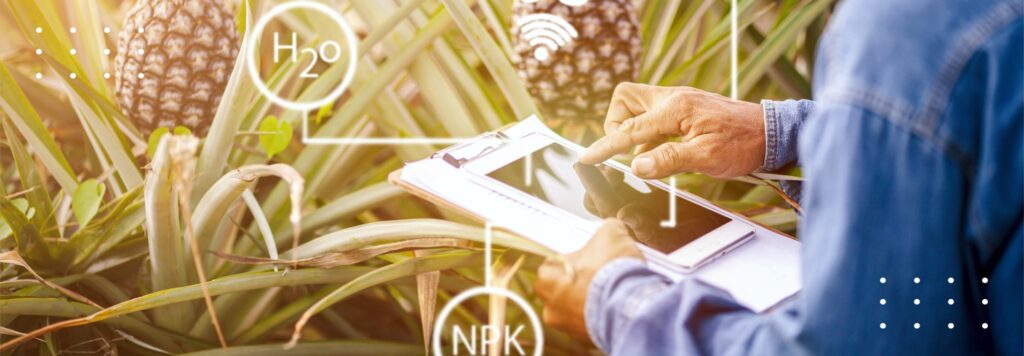AI & ML in Agriculture: How these Technologies are Shaping a Promising Future for Agro-sector

The technology tools that make the present and especially the future of agriculture more interesting would be less revolutionary without artificial intelligence (AI) and machine learning (ML). Undoubtedly, agricultural machinery and equipment based on these two disruptive technologies have brought global farming to a new level of efficiency.
On the modern farm, the use of advanced technologies such as autonomous vehicles, GPS-based soil monitoring, GPS guidance & control systems, and drones & robots based on AI and ML are increasing crop productivity. Additionally, these tools are enhancing growth tracking, crop harvesting, processing, and marketing in real time.
The United Nations’ prediction data on population and hunger estimates a 2 billion increase in the world’s population by 2025, requiring a 60% increase in food production to feed them. Therefore, it’s high time to understand the significance of AI and ML and use it to ensure precise, data-driven crop cultivation.
How AI and ML in Agriculture Improve Productivity and Sustainability?
Considering the existing challenges, the only way to meet the increasing food demand is to monitor and optimise the existing processes using technology solutions. This is where AI and ML in agriculture comes to the rescue. These technologies can empower agribusinesses to make data-driven decisions through the analysis of historical trends and real-time agricultural data.
AI and MI in Agriculture – The Key to Smart Farming
Agriculture is currently one of the most fertile industries for AI and ML. In smart farming, these technologies help obtain insights into how weather patterns, seasonal sunlight, planting and irrigation cycles, and the use of specialised fertilisers and pesticides by crop affect yield.
Integrated with yield prediction technologies, farm management software, and smart weather analysis, AI and ML have a huge impact on the effectiveness of crop classification and quality, disease detection and prevention, and agrochemical production.
Crop Yield Prediction Through Real-time AI-based Sensor Data
Today, smart sensors along with agribots and drones capture a tremendous amount of information, enable agriculture experts to carry out real-time monitoring, and provide them with huge sets of data. These experts can combine various sensor data of moisture, fertilisers, and nutrient levels to analyse the growth patterns of each crop.
AI and ML in agriculture are considered the ideal solutions to combine massive data sets and optimise field operations for excellent crop yields. Moreover, before a vegetation cycle is ever started, these technologies can help estimate the potential yield quantity through the analysis of soil condition data from sensors and drone-based data of the soil color.
Disease Identification and Prevention Using AI-based Surveillance System
In traditional farming, farmers spread equal amounts of pesticides and fertilisers per square meter to prevent pest attacks and infestations. However, this results in the wasteful usage of pesticides and fertilisers which significantly impacts the quality of crops and affects the crop prices.
AI-driven agriculture tools with image analysis software can analyse the health conditions of individual crops and soil erosion levels. The resulting data is then used to identify the location of pest infestations, enabling farmers to use pesticides only where it’s needed. Rapid advances in video analytics powered by AI and ML algorithms can further help reduce domestic and wild animals potentially destroying crops, especially in remote farm locations.
AI-based Agribots and Smart Tractors to Meet Workforce Shortage Challenges
A shortage of farm workers is a rapidly emerging challenge faced by the agriculture sector today. AI and machine learning-based smart tractors, agribots, drones and sensors are thus becoming viable options, especially for remote agricultural operations.
Autonomous robotics machinery can be programmed to use fertilisers appropriately across the farm to reduce operating costs and enhance yields. Furthermore, as these machines are equipped with sensors to detect any changes in the field, they provide an element of security around the perimeter of remote farms. These offerings help agribusinesses eliminate their dependence on human labour.
AI in Agriculture Improving Farming Efficiency
The key functions of AI and ML-based tools are to provide agribusinesses and field supervisors with appropriate data to help them make well-informed decisions. This can empower agribusinesses to carry out precision farming and produce high-quality crops consistently.
AI and ML in agriculture is ideal for calculating the optimal amount of water needed as well as to estimate the total quantity of fertilisers required for producing the desired quality of crops. It also assists in optimising irrigation systems to ensure that each and every crop gets enough water without wasting any in the process.
The Future of Agricultural Sustainability Lies in AI and ML
There’s no doubt that AI and ML is becoming an integral part of the agriculture industry’s fight to feed the future sustainably in the face of climate change. There is a growing need to incorporate tech-powered farming systems to address critical issues at hand, such as overconsumption of freshwater resources, biodiversity loss, and overuse of pesticides. FarmERP’s AI and ML based offerings gives agribusinesses greater visibility into farm planning and overall management, enabling them to act wisely and contribute to sustainability. Contact us to know more.
